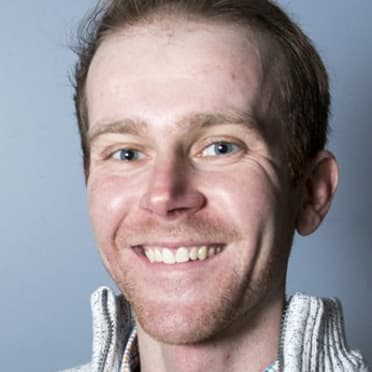SAN DIEGO -- Those seeking the thrill, or terror, of standing in the batter’s box and facing a 99 mph fastball from Gerrit Cole or a gnarly splitter from Shohei Ohtani can achieve that reality via new technology from Trajekt, a robotic machine capable of replicating every MLB pitcher.
With hardware that utilizes holographic images mirroring any given pitcher against a backdrop that shifts its shape to tailor as such, paired with software that can house reams of pitch-tracking data, Trajekt is the latest and greatest innovation for hitter preparation, pushing the perceived boundaries of batting practice to new heights.
It’s also one of the many projects on site at this year’s Winter Meetings for the Baseball Operations Technology Exhibition, an event that began in 2018 with 23 companies and has since grown to 52. With tech at the forefront of athlete development and the huge premium on specialized preparation in baseball today, it’s become one of the fastest-growing -- and most fascinating -- gatherings at the offseason’s jewel event.
Organized by Major League Baseball, the Tech Expo invites companies like Trajekt via open calls late in the year. Each offers a niche product, but they all center on the same theme: to help players swing, hit, pitch and coach. Their presence here allows the platform to reach all 30 MLB clubs, as most of these organizations aren’t able to get in front of the entire league throughout the year due to budget or time constraints.
“We had a small space. We had a limited footprint,” said Chris Marinak, MLB chief operations and strategy officer. “But what we started to see was that with access to capital, there was a growing opportunity for early stage, smaller technology companies to get into the sports space, and you didn't see that in early 2010s.
“You started to see there was capital going into these businesses and companies were starting up with specific technology that was geared towards baseball, and we felt like that was a trend that was going to continue. And what you see now is that that's actually kind of turned out to be true. The size of this event, just this event, has doubled.”
Marinak was the force behind establishing the original Tech Expo four years ago, but it’s Michael Shapiro, MLB director of innovation and venture investments, who has spearheaded the gathering after coming on board just prior to the first event. Two days are blocked off for technology-specific demonstrations and one for sports science.
“A lot of these partners and vendors here have relationships with Major League clubs,” Marinak said. “I would say most of them do, actually, and that's a product of the fact that our clubs are always looking for an edge. They're always looking for something that they think can help them on the field, and there's a lot of great technology there that I think adds to that.”
Trajekt is a device that addresses on-field performance and preparation, but there are also organizations with platforms that account for fitness training and general wellness.
For example, Uplift is a portable motion capture platform that tracks body movements straight from a phone or iPad camera, but without all the wearable equipment. In real time, hitters can glean relative metrics to their swing path and with a tangible percentage to its efficiency. Reflexion Interactive Technologies offers a lightboard-based touch screen that trains and assesses visual and cognitive abilities. Gemini Sports Analytics is a Cloud-based automated service to help executives make better decisions in how they acquire, develop and manage their athletes.
MLB’s efforts mostly halt at the invite stage, as the league doesn’t officially endorse or recommend any of these products directly to clubs. Rather, this event is meant to raise the visibility of these organizations that are transforming the game.
“We think our role is to bring the two parties together in a way that makes it accessible,” Marinak said. “But it's not our job to say you should do that you should do that. ... The idea behind this event was to make it just as easy for a Los Angeles club to see a vendor and a Milwaukee club or a Cincinnati, and so what you've seen here is a lot of our smaller to middle market teams have really surged forward in terms of engagement with these partners because it's created an access opportunity that they didn't otherwise have.”
